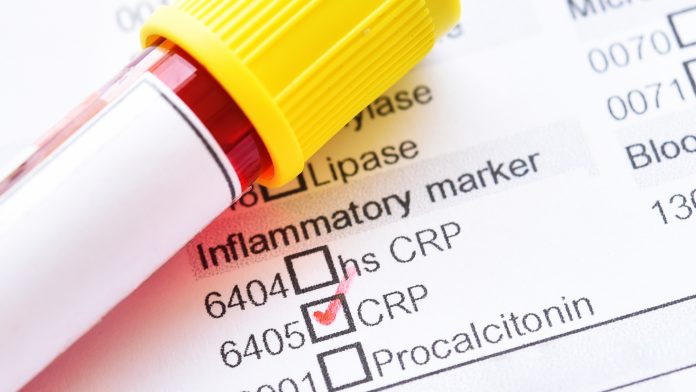
Researchers from Linköping University have found that the C-reactive protein known as CRP can improve function in inflammatory disease.
CRP blood tests are routinely used in healthcare to diagnose infections and inflammatory diseases in the body. However, before this research, the exact function of CRP has been unknown.
“CRP is an ancient protein, and similar proteins can be found in all animals, even in primitive organisms. When a protein has been so well preserved throughout evolution, this usually means that it has an important function. CRP is used a lot in clinical care as a marker of ongoing inflammation, but few have studied its biological effects,” explained Christopher Sjöwall, senior associate professor at Linköping University.
The study, ‘Conformational state of C-reactive protein is critical for reducing immune complex-triggered type I interferon response‘ has been published in the Journal of Autoimmunity.
How does CRP combat inflammatory disease?
Professor Sjöwall has devoted his research to chronic inflammatory diseases, including systemic lupus erythematosus (SLE). SLE causes the immune system to react to its own body. This leads to the formation of antibodies, called autoantibodies, that target endogenous constituents.
SLE can lead to low CRP levels when inflammatory activity in the body is high. Previous research on SLE in animal models has revealed that boosting CRP levels in patients can soften the effects of the disease and lower autoantibody levels. This led the Linköping researchers to hypothesise that CRP could have a beneficial function in human SLE.
A signalling protein called type I interferon plays a key role in SLE and protects the body against infections. During the first five hours of infection, interferon levels in the body increase rapidly, inhibiting the spread of the infection. Interferon levels should quickly fall back to normal levels; however, in inflammatory diseases, such as SLE, interferon can remain the system for too long and cause damage.
“We have shown a mechanism that is likely quite important, where the relative lack of CRP in SLE patients with high disease activity leads to high interferon activity,” said Professor Sjöwall.
Understanding the function of CRP
The researchers assessed the impact on interferon signalling proteins caused by CRP and SLE-specific immune complexes. They examined what happened when serum from SLE patients with varying levels of CRP was combined with healthy cells. The researchers discovered that interferon levels increased when CRP levels were low, confirming that CRP contributes to reduced interferon response.
The researchers also highlighted the importance of CRP’s shape. CRP comprises five identical units in a pentamer shape, each of which can function independently from the other. The team established that it was the pentamer shapes in CPR that allowed it to reduce interferon activity.
“The finding that the pentamer shape of CRP can suppress the immune response is interesting also in the context of other diseases, such as various virus diseases,” said Marie Larsson, professor of virology at Linköping University.
The researchers believe their findings can inform the development of new medicines to combat immune complexes and elevated interferon levels in inflammatory disease. However, due to interferon’s role in the body’s response to infection, treating SLE and other inflammatory diseases is a constant balancing act, according to the researchers, and further studies will be required to identify the best treatment strategies.







